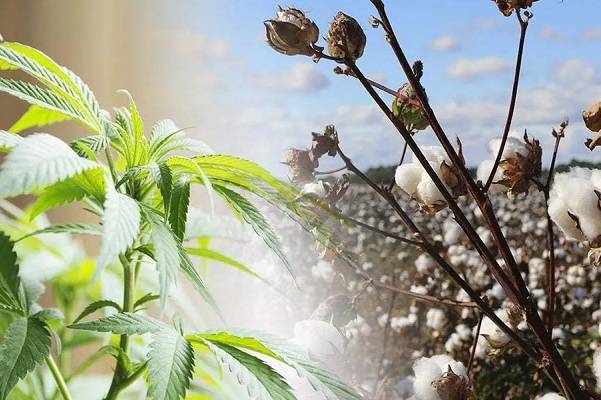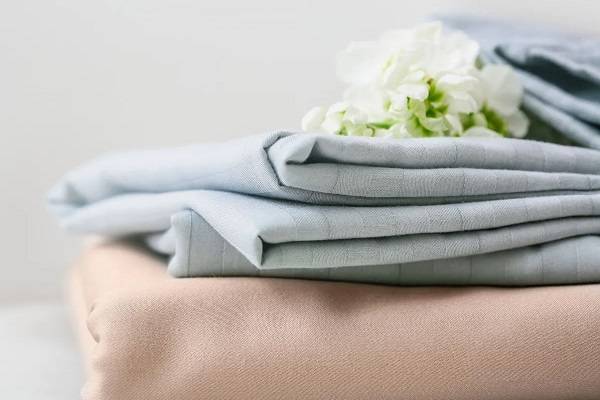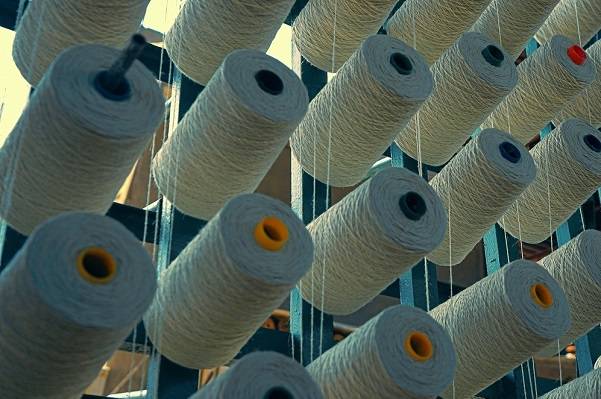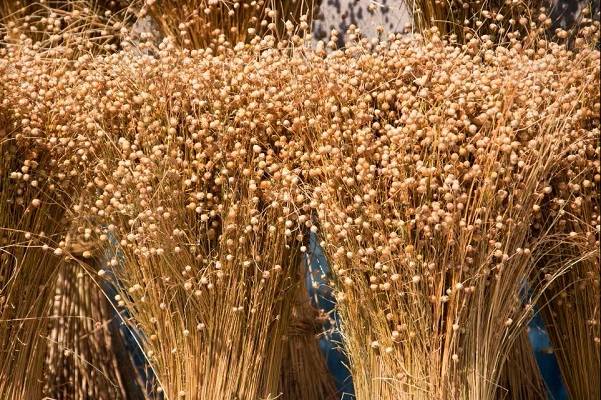Natural flax fiber is available in a range of different colors like ivory, taupe, oatmeal, grey, and ecru. The color is determined based on the plant was processed. White linen or bold color fabrics have been either bleached or dyed. To make sure you support sustainable living practices, choose suppliers who encourage eco-conscious manufacturing and products dyed with eco-friendly dyes that don’t harm the environment.
Linen Vs. Cotton: Revealing Key Differences of Precious Plant-Based Fibers
Analysis of The Distinct Properties, Benefits & Applications of The Two Beloved Materials

Innovation & Quality
Developing and supplying premium-quality, sustainably grown, consumer products
100% Natural
Organically Grown and Ethically Sourced
hemp and other natural fiber products
Shipping
We offer fast shipping
Your order out within 1-3 days
Wholesale
Visit our wholesale portal to register or login to your account
Throughout history, textile has played a significant role in human society. Various fibers coming from different sources have been used to make household items, apparel, equipment, or tools that would make human life easier and help them survive harsh climate or hostile environments.
Today, there is a wide selection of natural and man-made materials you can choose from, yet two plant-based fibers manage to maintain long-lasting value over the centuries – linen and cotton. Thanks to their versatile properties, they are popular supplies for various DIY projects, arts & crafts, and also for making t-shirts, bedding sheets, curtains, napkins, and much more.
But how do you decide which one to choose?
Hemptique: Your #1 Supplier of Finest Quality Natural Fiber Merchandise
If you want 100% natural products made of the finest materials, such as linen, hemp, cotton, or bamboo, Hemptique is your go-to destination. We produce a broad spectrum of first-class merchandise for various buyers – hobbyists, crafters, businesses, wholesalers, distributors, schools, workshops, etc. Our line of products includes meticulously sourced multi-purpose linen cords and linen twine that adhere to the highest standards of quality and eco-friendliness. For all inquiries about our products, contact us by phone at (760) 602-4864, ext. 402 & 405. To become a wholesaler and take advantage of discounted pricing options, feel free to register for a wholesale account. Experience the difference Hemptique makes and explore all the benefits of linen fiber.
Linen & Cotton Through the Ages
Linen fiber is a precious natural resource and a vital backbone of the textile industry that has preserved its importance since prehistoric times and keeps playing a crucial role even today. The first evidence of flax plant utilization dates back to about 30,000 years ago, while linen fiber was first used in ancient Egypt, about 10,000 years ago. Throughout history, this fiber has been used for making garments, shoes, furnishings, baskets, ropes, and other equipment that helped our ancestors run their day-to-day tasks easier. Today, linen is considered one of the strongest natural fibers with outstanding properties. Because of this, it continues to be readily used in all aspects of our lives, even in the present day.
What Is Linen?
Linen is a type of durable, natural thread derived from the cellulose fibers of the flax plant (Linum usitatissimum), which is amongst the oldest cultivated plants in human history. It is not to be confused with ‘linens’, which is a phrase typically used in the US to denote household textiles. Flax plant can be processed to form a thread, linen cord, or twine, which can then be used to make fabrics, clothing, draperies, and so forth. Different types of linen fabrics include damask, plain-woven linen, loosely-woven linen, sheeting linen, etc.
How linen is made
Linen production is considered highly complex and labor-intensive. When flax plants are of perfect ripeness, they are harvested and soaked in water (‘retting’) so that the fibers separate from the stalk. They are then crushed and extracted from the stalks and dried. After combing, straightening, and cleaning, the fibers are smoothed out and prepared for spinning. Finally, a thread is winded on a spool or into a ball. These are the exact threads that are woven to create linen fabrics we know today.
What Is Cotton?
Cotton fiber is made from cotton plant (of Gossypium genus), and it is one of the most popular materials used in textile manufacturing. Its fiber is staple and quite fine. In another words, short fibers are twisted together and spun into yarns. Their fineness allows for weaving into high thread count fabrics to achieve a soft and silky texture. Known for its multipurpose applications, cotton fiber is used to make anything from sturdy denim jeans to medical supplies. Although it is very popular in fashion industry, it is not the most durable fiber. It is susceptible to piling and undergoes a relatively fast wear and tear deterioration. There are many varieties on the market today: organic, Egyptian cotton, brushed cotton, poplin, Pima, muslin, and so on. Each type has its own benefits, but organic cotton distinguishes itself from other types by eco friendliness and reduced ecological impact.
How cotton fiber is made
Compared to linen, cultivation of cotton plant requires large amounts of water and pesticides, since it is very vulnerable to pests. Unless organically grown, cotton cultivation relies heavily on harmful chemicals and irrigation. After the cotton plant is ripe, the bolls that encase the fluffy fiber are harvested. Following the harvesting, the fibers are separated, cleaned, and aligned and spun into thread or twine, which is later woven (or knitted) into fabric.
An Overview of Major Properties
Linen and cotton fibers are similar because they are both natural, they both come from plants, and they both work well for various purposes. However, when we examine their essential attributes, like softness or strength, we notice apparent dissimilarities.
Comfort & softness
Compared to new linen, new cotton is noticeably softer. That being said, over time, with each wash and wear, rough flax fibers get significantly softer. Eventually, they will become comfortable and very soft. While cotton is gentle to touch right from beginning, it does not last as long as linen, as its fibers are more delicate and more prone to pilling. Therefore, if you want a long-lasting product that reduces waste, opt for linen or 100% pure organic cotton.
Appearance
When comparing the looks of these two fibers, you will notice that flax fiber looks crisp and stiff, but it is also more visually appealing due to its slightly rougher texture. Cotton is smooth, uniform, and more polished. Both materials have a laid-back appearance and are mainly used for casual wear or household applications.
Thermoregulation
Both materials are great to keep you warm in the winter. Although linen is usually associated with summer and heat, there is no need to be concerned. Flax fiber is hollow with natural thermoregulating and insulating attributes to keep you cool in heat, and warm in winter. A good rule of thumb is to layer linen apparel in colder weather. Cotton is also a great insulator, as it does not conduct heat. However, when it is wet, it has poor insulating properties.
Texture
When we talk about texture, cotton fiber is smoother and softer. Flax fiber is loosely woven and has a rougher texture, which softens with each wash. Linen feels sturdier and is often thicker than cotton, although it does not feel bulky.
Breathability
Both flax and cotton fiber have exceptional breathability properties. This feature allows air to circulate and body perspirations to escape. Generally, linen has slightly better breathability due to long, hollow fibers that let air flow so you can stay cool in warm weather. This is why it is preferred choice for bedding. By helping you regulate body temperature, you can have a better good night’s sleep. How breathable cotton is depends on the weave of fabric. For instance, thicker weave (denim) is less breathable than a basic T-shirt.
Durability
Although they feel stiffer and are porous, flax fibers are thicker and up to three times stronger than cotton, making them more durable. What this means is that thread count does not determine the quality and strength of linen fabrics. Linen is such a strong and long-lasting material that some would argue it is even the strongest plant-based fiber in the world after hemp. A testament to its durability is certainly the fact that some paper currencies contain a blend of linen fiber. Cotton fibers are shorter and weaker, and have a considerably shorter life span.
Hypoallergenic properties
Both are hypoallergenic; however, when we talk about textile, cotton of tighter weave is more likely to trap particles, thus, more likely to cause allergies. Flax fiber, on the other hand, prevents bacteria growth, which is why it’s commonly used to make napkins or towels.

Moisture absorbency
Although both fibers are very absorbent, there is a significant difference between the two. Linen becomes softer with every wash, while cotton fiber slowly disintegrates when exposed to moisture. Flax fiber can absorb up to 20% of its weight in water and dries faster than cotton, making it ideal for towels.
Moisture wicking
100% pure cotton is remarkably effective in absorbing moisture; however, it does not wick that moisture away. Rather, it traps it and remains damp until it dries. Linen, on the contrary, draws water (or sweat) away from the skin and dries quickly.
Price
The final price of the fiber is based on several factors, like availability, production processes, or how the plant is cultivated. Cotton is more affordable since it grows in more geographical areas, is easier to harvest, and is simpler to manufacture. Making linen requires considerable work and has limitations to where it can be grown. For these reasons, the price of linen fiber is higher.
Why is Linen Sustainable vs. Cotton
Let’s take a look at which fiber has a low carbon footprint and is better for our environment.
When we talk about raw materials, cotton has a bigger negative impact on the environment since chemicals and large quantities of water are used for its growing.
The flax plant is naturally resistant to pests and can be grown without the use of pesticides. It also requires fewer natural resources. In addition, linen fiber is a better eco-friendly option as it lasts longer.
Linen vs. Cotton: Common Uses & Applications
Below, you can find a comparison of the most common uses of the two fibers today.
Linen – Due to its amazing properties, flax fiber has a broad spectrum of applications, such as:
- Weaving,
- Sewing,
- Coiling,
- Insulation,
- Shoe threads,
- Sewing threads,
- Tents
Cotton – It is one of the most widely used fibers globally, due to its versatility, softness, and affordability. Its fiber can be used to make the following:
- Yarn & threads,
- Fabric,
- Garments,
- Home textiles,
- Fashion accessories,
- Medical equipment,
- Baby & feminine care products

Conclusion: Why Linen Is Better Choice Than Cotton
When it comes to choosing between linen and cotton, there are many factors to take into consideration before a buyer makes a choice. In addition to choosing a product that has social sustainability and a low carbon footprint, before making a purchase, consumers have to decide how each material fits their personal preferences in terms of longevity, comfort, availability, and value for the price. Both linen and cotton are natural plant-based materials that are breathable, lightweight, and comfortable. But if there can only be one winner, linen takes the spotlight. Linen has less impact on the environment, and it is long-lasting, thermo-regulating, and absorbent. Although cotton is readily available and cheaper, it’s not as durable and breathable as linen, and its production requires heavy use of pesticides and water. In the end, unless you buy organic cotton, linen wins this debate.
Frequently Asked Questions
1. What color is linen?
2. How to care for linen?
Linen should either be hand washed or machine washed on warm or gentle cycle. Make sure you use mild detergent. By following these instructions, you will avoid shrinkage. If you want to reduce wrinkling, remove linen items from the dryer while still slightly damp and lay them flat to air dry. By properly caring and storing in a dry and dark place, you will prolong its life and maintain its major properties throughout the lifecycle.
3. How to care for cotton?
Cotton is known for easy maintenance, but if you want to wash it properly, you should follow manufacturer’s instructions, as there are different kinds of cotton on the market. Generally, to keep it looking its best and to avoid shrinkage, it is best to wash it at a low temperature. Avoid tumble drying if you can, as it causes twisting. Both of these techniques will also contribute to lower energy consumption. Items like towels or bedding sheets can be washed at higher temperatures to prevent bacteria growth. When washing a highly pigmented and colorful cotton, it is always a good idea to turn the item inside out when before washing to avoid color bleeding.






